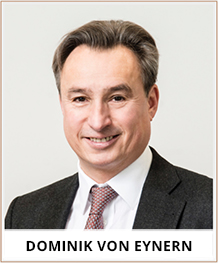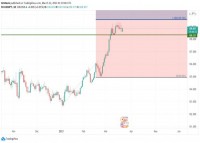|

Dominik von Eynern comes from a business family now in the 5th generation and is a Partner of Blu Family Office. He holds a BA in Economics from the University of Augsburg and a Masters in Financial Engineering from the Goethe University in Frankfurt and has over 20 years of experience in principal investment and business development. Matthias Knab: Why do families need a family constitution? Dominik von Eynern: Because families may form a unity on the outside, but on the inside, they may not be that unified, driven by the diversity of belief systems and thus, a lack of a common reality. The absence of a common reality impedes efficient decision-making and is conducive to behavioural risks materializing. In other words, the human capital and the social capital which are responsible for the creation of financial capital can become fiercely destructive and erode wealth in a much shorter period of time than it took it to build. Therefore, we need to think of ways to contain and manage behavioural risks. One of the proven risk management instruments is creating a constitution that identifies and aligns the belief systems, the values, the goals, the visions of a family in a document, so that everyone is on the same page. Matthias Knab: Dominik, your family went through the process of creating a family constitution. Can you give us an idea how much time this process takes until a document has been created and approved by the whole family? Dominik von Eynern: This of course depends on the family and also on the size and complexity of family. In our case, we were over 20 people and we hired an external facilitator, which is important because anyone from the family is likely to be suspected to have an agenda. So, we took an impartial adviser and spent four weekends on the matter and after some discussions, we had the constitution drafted by our facilitator ready to sign off. The family constitution was also supposed to unfold its impact top-down, to create a common reality for all family members of which there are more than the number of signatories. “Creating a common reality” may sound strong, but fact is, that you can quickly have problems if these documents are not lived – meaning they are finalized and signed off, and then they rot somewhere on the shelf. It’s therefore an ongoing challenge to keep your family constitution alive and relevant, also for the non-signatories. Just meeting up in a representative group and formulating the document and sign it won’t hack it – it is simply insufficient for the creation of a common reality! Today, I would advise to follow an all-inclusive bottom up approach and spend more time on creating a common reality before writing and signing the document. This way family members are more likely to own it and hence, live and abide by it. Matthias Knab: What are your observations and experiences here? Which are some successful or promising ways you have seen within your own and other families how to ensure a family constitution is lived? Dominik von Eynern: In our specific case we had a generational change in governance, and we referred to our family constitution heavily to actually bring this change about, for this matter we made it a living document indeed. Maybe if we weren’t in that specific situation, the constitution wouldn’t be that alive. Besides that, regular gatherings of family members at the AGM or at the family day provide ample opportunities to enact the principals of the document, for instance by the way of self- conduct. Relevance must be ensured by revisiting the document regularly, especially with more of the next generation maturing or after major disruptions. Matthias Knab: So, you had a good experience and would recommend that process where a trusted and capable person or coach works with the family on an individual basis for some time. Dominik von Eynern: Correct, it takes time, but it is a good investment and experience for individual family members and the group as such. Indeed, my recommendation would be to have someone who works with the individuals and then with the group to create this common reality. How long does it take? I can’t be the judge of that because every family is different in size and in complexity. It may take half a year, it may take a quarter of a year, or a year and then, but it must not stop there. Again, regarding the methodology I think it’s better to have someone working with a bottom-up process rather than a superimposing top-down approach. Matthias Knab: Dominik, I know you also have a personal research and academic focus on behavioral economics, in particular behavioral risks that can unfold in wealthy families. Is there a sort of link between having or not having or not living the constitution? Dominik von Eynern: Not living the constitution is tantamount of not having it, since it is not a legal document. So, why is it worth having one? Family constitutions can mitigate behavioural risks by setting out principals and managing expectations which is paramount for the survival of families. Family wealth is at risk, but the biggest risk to family wealth is the family itself! To put this into context: every family has three major risk exposures: behavioral risks, financial risks, and operational risks. Financial risks can be reduced to an asset/ liability problem which must be solved efficiently. Operational risks are to do with how and where to hold the wealth (asset protection etc.) and behavioural risks are inefficient behavioural patterns, exhibited by family members or the group of family members that negatively impact on financial and socio-emotional wealth. These three risks are all interrelated, and if we were to weigh them, behavioral risks account for most of it. This argument is supported by a study done by Vic Preisser in the US, which looked at why family wealth transitions are actually failing. According to this study, in over 90% of the cases, materializing behavioral risks are the culprit, which leaves very little for investment, tax and legal aspects, that’. Behavioural economics is a way to think about behavioural risks, which makes it more graspable for me. Matthias Knab: Do you want to tell us in greater detail what are these behavioral risks and how do they materialize? Dominik von Eynern: For instance, successions have plenty of behavioral risks with far reaching consequences. The issues here are often problems around mismatched expectations. Many of these expectations are not known to others. People live with ambiguity, fill in the gaps by simulations and suppress emotions. The emotional undercurrents will surface at some point and may cause conflict. At some point, the patriarch wants to retire or is suddenly retired unplanned by disease or death – then often things start to get really messy. Why? Because these previously tacit expectations are being voiced. When you run into family conflicts, very likely lawyers get involved, much to their delight, as it can quickly develop into a very costly process. And when a conflict ensues and spreads like algae, the family can then be at risk to disintegrate which also has economic implications. The family can no longer invest together and it loses economies of scales. The business performance suffers and so do the work force, who rely on their employment, income and purpose. It may have ripple effects as external financiers and clients fear to contract with unstable businesses. The next generation is a chance and a risk at the same time. If the next of kin have more than enough money in a consequent free environment and no purpose, they have an incentive to be indolent, harming their psyche. Human beings thrive to find purpose, the lack of purpose induces cognitive dissonance in individuals. Compensation strategies can come in form of self-indulging behavior in conjunction with drugs, gambling and other addictions which causes health and reputation-risks for the whole family. The next generation can also represent opportunity risks in this way, because they also could contribute to family wealth by pursuing more productive activities. Both examples reduce family wealth. Matthias Knab: When it comes to governance issues and behavioral risks of the actual family- owned businesses, what recommendations would you have when someone believes or suspects that the corporate governance in their family business is subpar to best practice? Dominik von Eynern: Well, I think that best practice is a dangerous word. But first of all, why do you need governance? Mostly, there is a strong-minded patriarch who manages the business. Like all mangers, his mandate is to take calculated risk and allocate resources efficiently, but not many hold him to account and dare to challenge him. Members of the advisory board tend to be ‘trusted’ advisors or ‘yes-men’, which are not independent, the group of shareholders consists of well-conditioned people pleasers. As a result, the governance is weak, the manager’s behavioural biases remain unchecked if not endorsed, which exacerbates the problem. Resources are likely to be allocated inefficiently to the detriment of financial, as well as socio-emotional family wealth. Patriarchs often see themselves as stewards. The stewardship regime is an invention of the 19th century and is still practiced to this day in more or less implicit ways. According to the theory, one person is usually doing everything and everyone trusts this person to act altruistically in their interest. The core problem is information asymmetry and unchallenged agency risk. I argue that the steward is an agent, which is described in the principal-agent theory. The principal-agent theory applies when you have a pool of capital that is not solely controlled by the capital-owners but by someone else who cannot be trusted to act in the interest of the capital owner as he has an incentive to pursue his private agenda.
| ||||
|
Horizons: Family Office & Investor Magazine
Dominik von Eynern: Creating and living a Family Constitution |
|





 RSS
RSS








